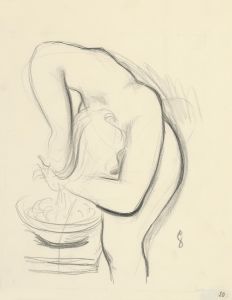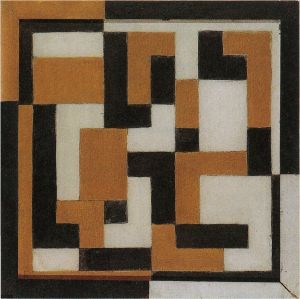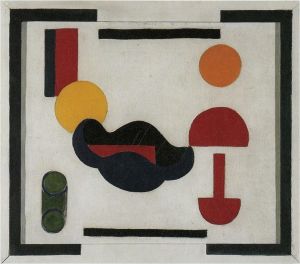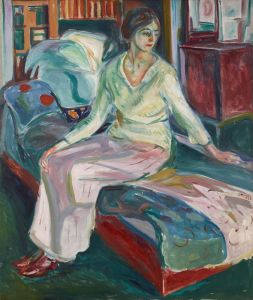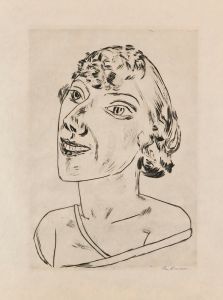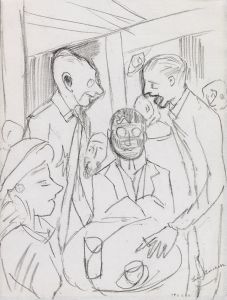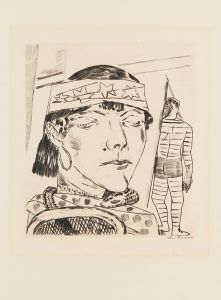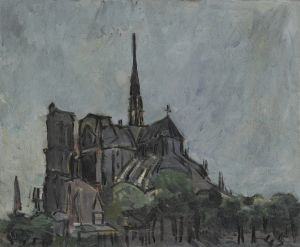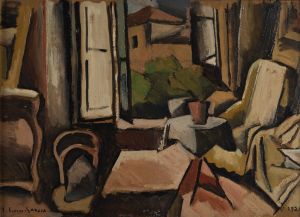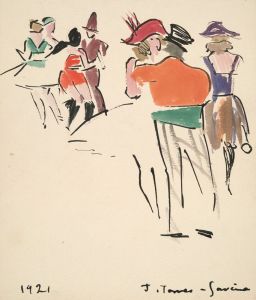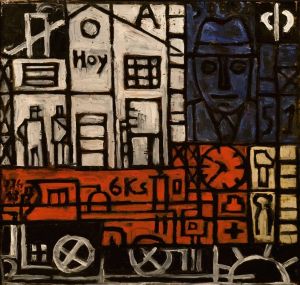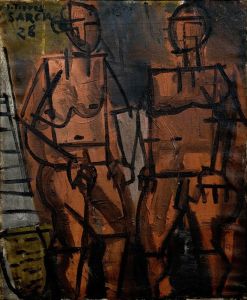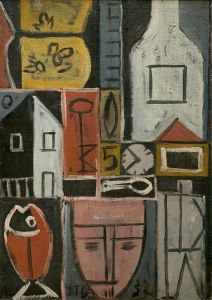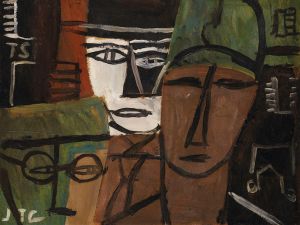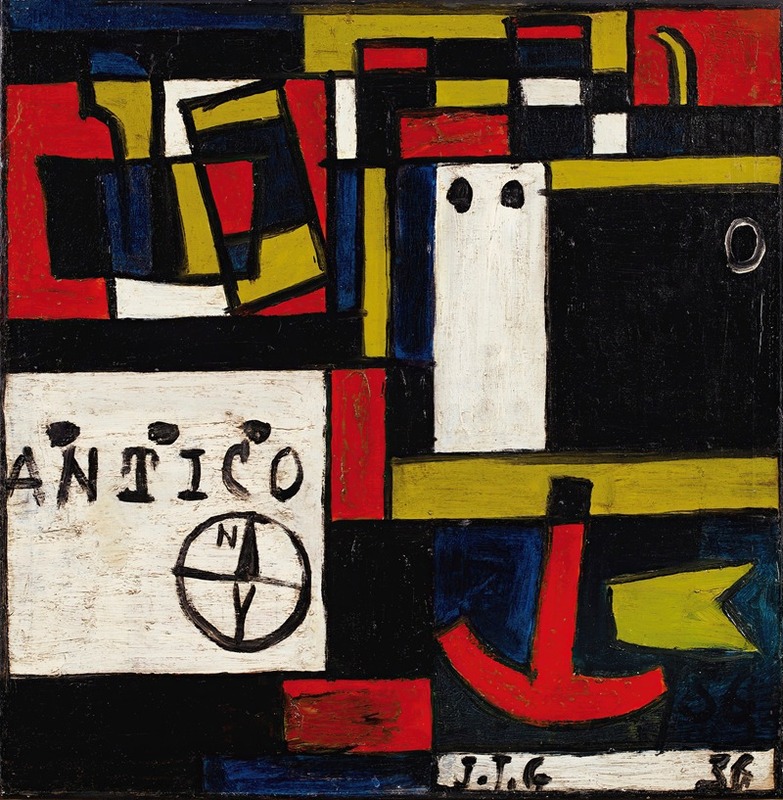
Transatlántico Constructivo
A hand-painted replica of Joaquín Torres-García’s masterpiece Transatlántico Constructivo, meticulously crafted by professional artists to capture the true essence of the original. Each piece is created with museum-quality canvas and rare mineral pigments, carefully painted by experienced artists with delicate brushstrokes and rich, layered colors to perfectly recreate the texture of the original artwork. Unlike machine-printed reproductions, this hand-painted version brings the painting to life, infused with the artist’s emotions and skill in every stroke. Whether for personal collection or home decoration, it instantly elevates the artistic atmosphere of any space.
Joaquín Torres-García was a prominent Uruguayan artist known for his contributions to modern art and his development of the Constructive Universalism movement. One of his notable works is "Transatlántico Constructivo," which reflects his unique approach to art that combines elements of abstraction with symbolic and universal themes.
Torres-García was born in Montevideo, Uruguay, in 1874 and spent much of his early career in Europe, where he was influenced by various avant-garde movements. He lived in cities such as Barcelona, Paris, and New York, where he interacted with other influential artists and developed his distinctive style. His work is characterized by a synthesis of geometric abstraction and a personal symbolic language, often incorporating elements from different cultures and historical periods.
"Transatlántico Constructivo" is a prime example of Torres-García's Constructive Universalism, a theory he developed that sought to create a universal language of art through geometric forms and symbols. This movement aimed to transcend cultural and temporal boundaries, creating art that was accessible and meaningful to all people. The painting embodies this philosophy by using a grid structure filled with various symbols and shapes that represent different aspects of human experience and knowledge.
The grid, a recurring motif in Torres-García's work, serves as a framework that organizes the composition and allows for the integration of diverse elements. In "Transatlántico Constructivo," the grid is populated with a variety of symbols, including arrows, fish, and human figures, each carrying its own significance. These symbols are drawn from a wide range of sources, including pre-Columbian art, ancient Mediterranean cultures, and modern industrial society, reflecting Torres-García's interest in creating a dialogue between past and present.
The painting's title, "Transatlántico Constructivo," suggests a connection between the Old World and the New World, highlighting Torres-García's transatlantic experiences and his desire to bridge different cultures through art. This theme is further emphasized by the inclusion of maritime symbols, which evoke the idea of travel and exchange across the Atlantic Ocean.
Torres-García's work, including "Transatlántico Constructivo," had a significant impact on the development of modern art in Latin America. Upon returning to Uruguay in 1934, he established the Taller Torres-García, an art workshop that became a hub for young artists and played a crucial role in the dissemination of Constructive Universalism in the region. His teachings and artistic philosophy influenced a generation of artists and contributed to the emergence of a distinct Latin American modernism.
In summary, "Transatlántico Constructivo" by Joaquín Torres-García is a significant work that encapsulates the artist's vision of a universal art language. Through its use of geometric abstraction and symbolic imagery, the painting reflects Torres-García's efforts to create art that transcends cultural and historical boundaries, fostering a sense of unity and shared understanding among diverse peoples. His legacy continues to be celebrated for its innovative approach and its impact on the trajectory of modern art in Latin America and beyond.





